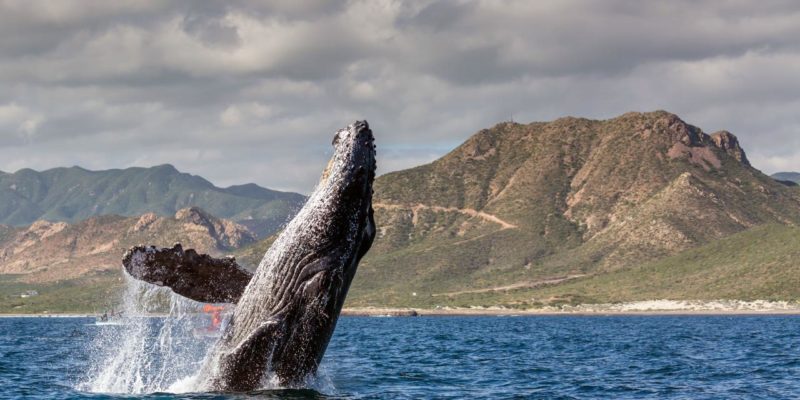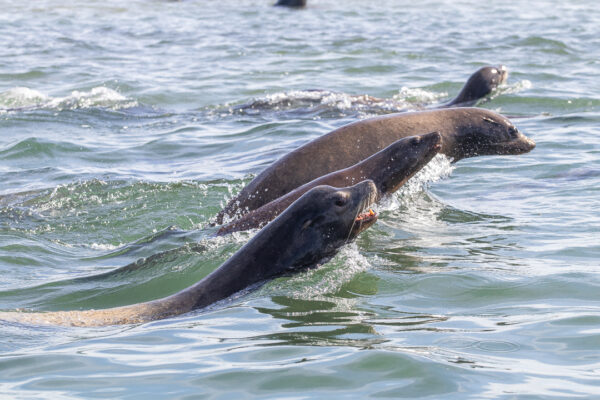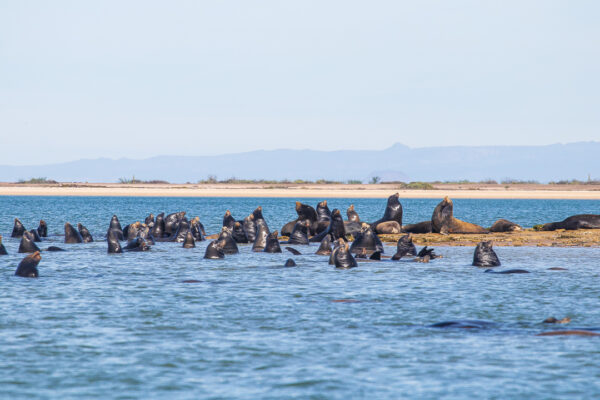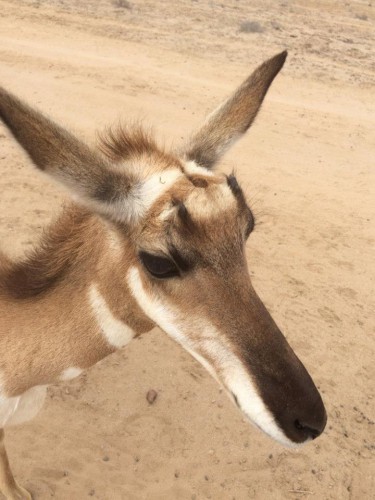Have you ever wondered what kind of wildlife you can encounter on Mexico’s Baja California Peninsula? Well, get ready to be amazed because this place is home to some truly astonishing creatures. From majestic whales and playful dolphins to unique desert fauna, the Baja California Peninsula is a paradise for wildlife enthusiasts. In this article, we will delve into the diverse and thriving ecosystem of this region, where both land and sea creatures coexist in harmony. So, buckle up and get ready for an adventure like no other as we explore the astonishing wildlife of Mexico’s Baja California Peninsula.
When it comes to wildlife, the Baja California Peninsula is a true gem. Starting with the seas surrounding the peninsula, you’ll be greeted by a plethora of marine creatures that will leave you in awe. Whale watching is one of the top attractions here, as the peninsula serves as a breeding ground for several whale species. From gray whales to humpback whales, you can witness these majestic creatures in their natural habitat, breaching and exuding grace with every movement. And if you’re lucky, you might even spot a pod of dolphins playfully gliding through the waves. But the wildlife extravaganza doesn’t stop at sea. The peninsula is also home to unique desert fauna such as cacti, lizards, and desert foxes. Exploring the untouched desert landscapes will give you a chance to observe these fascinating creatures up close and learn about their survival strategies in such harsh environments.
So, get ready to be captivated by the astonishing wildlife of Mexico’s Baja California Peninsula. In the upcoming article, we will dive deeper into the different species that call this place their home and learn about the conservation efforts in place to protect their habitats. Whether you’re a nature lover, an adventure seeker, or simply curious about the wonders of the natural world, the wildlife of the Baja California Peninsula is sure to leave you speechless. So, stay tuned and get ready to embark on a journey that will take you through the mesmerizing wilderness of this captivating region.

Introduction to the Baja California Peninsula wildlife
The Baja California Peninsula, located in northwestern Mexico, is home to an astonishing array of wildlife. From its rich marine life to diverse bird species and unique plant life, the peninsula offers a captivating experience for nature enthusiasts. The region’s wildlife is not only diverse but also of great historical and ecological significance. In this article, we will explore the unique biodiversity of the Baja California Peninsula, highlighting its marine life, birds, land mammals, reptiles and amphibians, plant life, as well as the conservation efforts and challenges faced by this remarkable ecosystem.
Unique biodiversity in the Baja California Peninsula
The Baja California Peninsula is renowned for its unique biodiversity, owing to its geographical location and diverse ecosystems. This narrow strip of land, stretching over 1,200 kilometers, is flanked by the Pacific Ocean to the west and the Gulf of California to the east, creating a diverse range of habitats for wildlife. From mangrove forests and sandy dunes to rocky coastal areas and vast deserts, the peninsula offers a range of ecosystems that support a wide variety of plant and animal species.

Historical significance of the wildlife in Baja California Peninsula
The wildlife of the Baja California Peninsula has played a significant role in the history of the region. The ancient cultures that inhabited the peninsula, such as the Pericú and the Cochimí, had a deep connection with the natural world and relied on the wildlife for sustenance. The abundance of marine life provided a valuable food source for these communities, while the land mammals were hunted for their meat and fur. Today, the wildlife of the Baja California Peninsula continues to captivate and inspire both locals and visitors alike.
Marine Life in Baja California Peninsula
The waters surrounding the Baja California Peninsula are teeming with marine life, making it a paradise for marine enthusiasts and nature lovers. The region is home to a rich diversity of marine species, including whales, sharks, rays, and myriad of fish and invertebrates. One of the most iconic attractions in the peninsula is the opportunity to witness the majestic gray whale migration. Every winter, these magnificent creatures travel thousands of miles to the warm waters of Baja California to give birth and raise their young. Whale watching tours offer a unique chance to observe these gentle giants up close.

Birds of Baja California Peninsula
The Baja California Peninsula boasts a remarkable variety of bird species, making it a haven for birdwatchers. With its diverse ecosystems, including coastal areas, wetlands, and deserts, the peninsula attracts both endemic and migratory bird species. From majestic raptors soaring through the skies to colorful songbirds flitting among the trees, the avian diversity in the region is truly astounding. Popular birdwatching spots such as the Laguna Ojo de Liebre and the Todos Santos Islands offer excellent opportunities to observe these winged wonders in their natural habitat.
Land Mammals of Baja California Peninsula
The Baja California Peninsula is home to a range of native land mammal species, including predators and herbivores. Among the top predators are the elusive pumas and coyotes, while herbivores like mule deer and bighorn sheep roam the desert landscapes. The peninsula also supports a population of endemic species such as the peninsular pronghorn, a critically endangered antelope that is found nowhere else in the world. Conservation efforts are underway to protect these emblematic species and ensure their survival for future generations.

Reptiles and Amphibians in Baja California Peninsula
The Baja California Peninsula is known for its diverse reptile species, including lizards, snakes, and turtles. Some of the most iconic reptiles found in the region include the charismatic Baja California spiny-tailed iguana and the impressive gila monsters. Additionally, the peninsula is home to unique amphibian species, such as the Sonoran desert toad and the Baja California tree frog. These fascinating creatures play a crucial role in maintaining the delicate balance of the ecosystem and are worthy of protection and conservation.
Plant Life in Baja California Peninsula
The Baja California Peninsula boasts a remarkable biodiversity of plant life, with numerous species adapted to the arid climate of the region. From cacti and succulents to desert shrubs and coastal dune vegetation, the peninsula’s plant life is both diverse and resilient. Some rare and endangered plant species, such as the boojum tree and the Cardon cactus, can be found in the region. These unique plants not only provide habitats for wildlife but also contribute to the ecological balance of the peninsula.

Conservation Efforts in Baja California Peninsula
Recognizing the importance of preserving the unique wildlife of the Baja California Peninsula, various conservation initiatives have been implemented. Protected areas and national parks, such as the Sierra de San Pedro Mártir and the El Vizcaíno Biosphere Reserve, provide essential habitats for endangered species and contribute to the overall preservation of the peninsula’s biodiversity. Collaboration between government agencies, non-profit organizations, and local communities plays a crucial role in these conservation efforts, ensuring the long-term sustainability of the region’s natural heritage.
Ecotourism in Baja California Peninsula
The Baja California Peninsula offers numerous opportunities for eco-friendly tourism, allowing visitors to experience its astonishing wildlife while minimizing their ecological footprint. Sustainable practices, such as responsible whale watching and guided hikes that educate visitors on the fragile ecosystems, are encouraged to protect the wildlife and its habitats. Furthermore, eco-tourism not only promotes conservation but also provides economic benefits to local communities, contributing to the livelihoods of those who depend on the region’s natural resources.
Challenges and Threats to Wildlife
Despite the efforts of conservationists and local communities, the wildlife of the Baja California Peninsula faces numerous challenges and threats. Human activities, such as urbanization, agriculture, and overfishing, have had a significant impact on the natural habitats of wildlife in the region. Additionally, illegal wildlife trade and poaching pose a constant threat to endangered species, undermining conservation efforts. Climate change, with its rising temperatures and changing rainfall patterns, also poses a threat to the biodiversity of the peninsula, affecting both marine and terrestrial ecosystems.
Research and Scientific Discoveries
Scientific research and studies have been instrumental in understanding and conserving the wildlife of the Baja California Peninsula. Researchers have made significant discoveries, including the identification of new species that were previously unknown to science. These findings contribute to a deeper understanding of the region’s biodiversity and help guide conservation efforts. Furthermore, research also plays a vital role in monitoring and assessing the health of the ecosystems, providing valuable insights into the impacts of human activities and climate change.
Education and Awareness
Educational programs and initiatives are crucial in raising awareness about the wealth of wildlife found in the Baja California Peninsula. Schools, museums, and conservation organizations offer educational resources and activities aimed at promoting wildlife awareness and inspiring a sense of stewardship among the younger generations. Community involvement in environmental education plays a pivotal role in fostering a culture of conservation, ensuring the long-term sustainability of the region’s wildlife. Additionally, the role of media cannot be underestimated in raising awareness and garnering support for conservation efforts.
Conclusion
The Baja California Peninsula is a treasure trove of astonishing wildlife, offering a unique and immersive experience for those who venture into its natural wonders. The diverse marine life, birds, land mammals, reptiles and amphibians, and plant life all contribute to the peninsula’s exceptional biodiversity. Preserving and appreciating this natural heritage is of utmost importance, not only for the ecological balance of the region but also for the enriching experiences it offers to both locals and visitors. It is essential for us all to join hands in conservation efforts, practicing sustainable tourism and supporting initiatives that protect the extraordinary wildlife of Mexico’s Baja California Peninsula. Together, we can ensure that future generations will be able to discover and marvel at this astonishing wilderness for years to come.